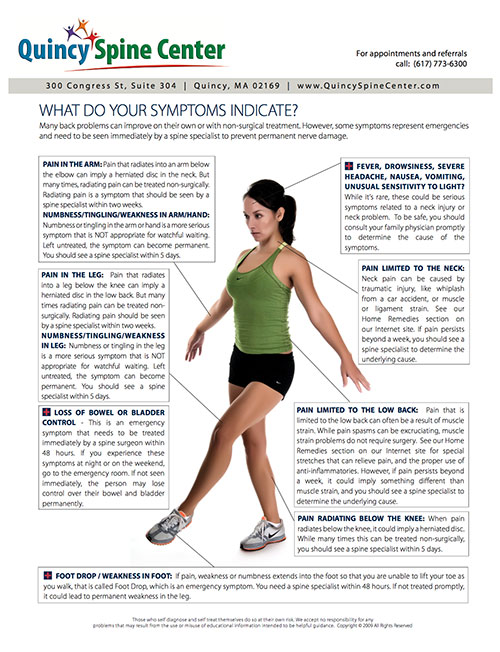Home >> Spine Problems >> Scoliosis Overview >> Flatback Syndrome
Flatback Syndrome
When the proper curves in the spine that support an economical stance requiring minimum energy to stand or walk fail, the result is a condition called Flatback syndrome.
Symptoms
Some of the symptoms include having trouble maintaining a proper posture, low back pain and thigh pain. Since the person has trouble maintaining proper alignment, the symptoms might increase throughout the day due to fatigue. Patients might also have upper back and neck pain due to constantly trying to realign themselves. These symptoms can often develop to be very painful and leads some patients to having to take medications.
Causes
Flatback syndrome was originally used to describe Harrington rods recipients (1960s- early 1990s) due to the fact the rods sometimes flattened the normal sway of the spine. This was due to the rods extending down into the lower part of the spine. The rods were unable to follow the natural curve of the lower back, which caused the spine to unnaturally straighten out. This unnatural movement helped advance the degeneration of discs in the spine. New advancements in modern scoliosis technology have been credited it making flatback syndrome a much less common problem.
Degenerative Disc Disease can contribute to the person having trouble maintaining upright posture. This disease is from normal wear on the intervertebral discs.
Other conditions that may cause flatback syndrome include having collapsed vertebrae. Arthritis can also contribute to flatback syndrome and cause inflammations in the spine, which may cause pain and stiffness.
Diagnosis
Most patients with flatback syndrome will complain of having trouble maintaining a standing upright posture. If the doctor determines you might have flatback syndrome, he or she will order a full-length X-ray of the spine. An MRI or CT scan might also be taken to help the doctor better understand the health of the spine and discs.
Treatment
Patients diagnosed with Flatback syndrome will initially be treated with an individualized physical therapy program and anti-inflammatory medication. If all non-surgical options have become exhausted, it may be necessary to surgery.

Understanding Symptoms
Pain is not a good indicator of when to see a doctor for a spine problem. While a back spasm can be excruciating, the good news is that ligament strain doesn’t require surgery.

Quincy Bundled Rate
Find out more about a simple 20 minute office procedure — at a $700 bundled rate — that can eliminate the need for spine surgery.

Jeffrey Jackel, MD
Board-certified Anesthesiologist
Board-certified in Pain Medicine (exp)


